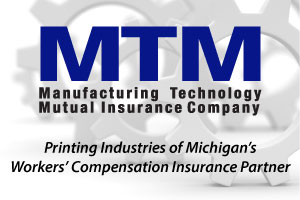
Jul 28, 2016 | Finance Information
By Bodman’s Workplace Law Practice

After years of anticipation, on May 18, 2016, the United States Department of Labor (DOL) issued Final Regulations changing the minimum salary requirements for exempt salaried executive, administrative, professional, and computer employees. This is the first change in DOL Regulations since 2004 when the minimum exempt salary requirement increased from $250 per week to the current $455 per week. The goal of these new Final Regulations is (1) to allow more employees who are currently exempt – and do not receive overtime pay – to be paid overtime (one and one-half times an employee’s regular rate of pay for all hours after 40 hours of work in a workweek) and (2) to raise the pay of many employees that the employer wishes to maintain as exempt. Employers will be forced to make tough payroll decisions regarding who will remain exempt and how to compensate the newly non-exempt employees.
Employees must still meet the existing “duties” test applicable to an executive, administrative, professional, or computer employees. Under the Final Regulations, beginning on December 1, 2016, the minimum amount an employer must pay an exempt salaried employee increases:
- To $913 per week (annually $47,476) for exempt executive, administrative, and professional employees.
- To $134,004 per year for highly compensated employees, which also must include at least $913 per week paid on a salary or fee basis, as defined by the DOL Regulations.
- To $913 per week (annually $47,476) for highly skilled exempt computer employees. These highly skilled computer employees may also be exempt if paid hourly at a minimum of $27.63 per hour (annually $57,470.40), which is unchanged from the current Regulations.
The salary levels will be indexed, with the minimum salary
level evaluated every three years beginning January 1, 2020, effectively guarantying raises for employees at or near the minimum salary level. No changes were made to the outside salesperson category or to the “duties” tests for the executive, administrative, professional and computer exemptions.
One element of the new Rule may benefit employers. Up to 10% of the exempt employee’s salary may be satisfied by the payment of “nondiscretionary bonuses, incentives, and commissions that are paid quarterly or more frequently. If by the last pay period of the quarter, the sum of the employee’s weekly salary plus nondiscretionary bonus, incentive, and commission payments received does not equal 13 times the [required] weekly salary,” the Final Regulations allow for a “catch-up” payment to meet the minimum requirements.
It is incumbent on all employers to remember that a salary under the DOL Regulations is more than just a “salary.” The Regulations define a “salary” as a predetermined amount of compensation paid each pay period with no reduction of pay because of variations of quality or quantity of an employee’s work. A bona fide sick pay policy is required. Deductions from “salary” are limited to those allowed by the DOL Regulations. Employers will be required to take action to meet these new challenges. To be ready for December 1, 2016 and beyond:
- Identify current exempt employees and their salaries;
- Determine the actual weekly hours that current exempt
employees work and their projected future hours over 40 in a
week after December 1, 2016;
- Determine which exempt employees currently earning
less than $913 per week will be kept exempt and receive pay
increases;
- Confirm that the DOL’s non-monetary salary requirements
are met for the exempt employees;
- Ensure that the exempt employees meet the applicable
“duties” test;
- Develop pay plans for the former exempt
Bodman can provide guidance on the new regulations and help your company meet compliance deadlines on
time and in a way it makes most sense for your organization. Contact Workplace Law Practice Group Leader
Maureen Rouse-Ayoub, client alert author Donald H. Scharg, one of the lawyers from the Workplace Law Group,
or your go-to Bodman attorney for more information.
Maureen Rouse-Ayoub
Chair, Workplace Law
Tel: 313-392-1058
Email: mrouse-ayoub@bodmanlaw.com
Donald H. Scharg
Member, Workplace Law
Tel: 248-743-6024
Email: dscharg@bodmanlaw.com

Apr 2, 2016 | Information
5 Things Every Small Business Can Do
By Phyllis Borzi, U.S. Department of Labor Blog

John knows he has been able to attract and keep talented staff because his winery offers a retirement plan. Tim credits the 401(k) plan at the Dairy Queen he manages with motivating employees to stay with the company long-term – which translates into more savings for the owner. For John and Tim – and for small businesses across the country – retirement plans that help their employees prepare for the future are having real benefits for their businesses today.
Saving for retirement is easier than many small business owners think. There are a number of options available to help you and your employees save; and what’s more, they also provide tax advantages to both your business and your employees. As part of America Saves Week, we’re reaching out to make small businesses aware of these options and provide information to help in choosing, setting up and operating a retirement plan.
Here are five steps every small business can take toward a secure retirement:
1. Explore the Retirement Plan Options
There are many retirement plan options available, including Individual Retirement Arrangement -based plans such as Payroll Deduction IRAs, SEPs and SIMPLE IRAs, and defined contribution plans like the 401(k) plan. In addition, myRA is a simple, safe and affordable way to help your employees start saving. Learn more about each option and what is involved in operating the plan before choosing the option that’s best for your needs.
2. Determine What Features You Want for Your Plan
Consider your needs as a business owner. Review the features of each option to see which best meets your needs. For example, do you want flexibility in employee and employer contributions? What are the pros and cons? The department has publications and tools to help you compare the options.
3. Assess Your Retirement Needs
Retirement is expensive. Experts estimate that you will need 70 to 90 percent of your pre-retirement income to maintain your current standard of living after you stop working. How much will you need for a secure retirement? We’ve got tools to help you save.
4. Choose a Plan
Review and compare the options to find the one that best meets your needs. You may want assistance from a retirement plan professional or adviser who is legally required to act in your best interest. Or you can contact us if you have questions.
5. Get Started, Now!
The best time to start saving is right now. We have information to help you set up your plan. And once your plan is in operation, we have publications and tools to help.
You can view our video featuring small business owners and their employees and accountants discussing their consideration and selection of a retirement saving solution by visiting YouTube and searching for the video entitled “Choosing a Retirement Solution for Your Small Business.”
Choosing a retirement savings plan is the first important step towards saving for a secure future. America Saves Week is a great time to get started.
About the Author: Phyllis C. Borzi is the assistant secretary of labor for employee benefits security. Her blog was published on http://blog.dol.gov.

Feb 2, 2016 | Information
with Some Baseline Metrics
By Stuart W. Margolis, CPA, MT

Year-end is a great time to capture metrics on the past twelve months and make sensible projection for the next twelve. As you start the process, evaluate Break Even. Break Even Analysis is a fundamental and important criterion for management to use in formulating overall business strategies for selling printed product, establishing work shift production benchmarks and evaluating success in various other areas of the company.
Performing Break-Even Analysis Can Help to:
- Determine price levels
- Analyze sales needs and goals
- Estimate whether or not an expansion project or cost-saving project makes sense
- And more
Break-Even Analysis
The goal of a Break-Even Analysis is to determine when sales and revenue equals total expenses. Beneath the surface, the real value of this analysis lies in helping managers break down the components of the equation to determine the relationship between revenue, fixed costs and variable costs. In essence, management should use it to determine answers to questions like:
- “Has our press purchase paid off?”
- “Are we covering costs at our current pricing levels?”
- “Did our company “break-even” on that big job requiring so many outside services?”
- “How much printing needs to be sold and produced so all of our expenses are covered?” Changing one component of the break-even analysis changes the results and allows managers to explore various potential scenarios to make better decisions and forecasts.
Changing one component of the break-even analysis changes the results and allows managers to explore various potential scenarios to make better decisions and forecasts.
Pricing Decision Break-Even Analysis
| Scenario: Here’s a snapshot of a company |
The Variable Costs for the month based on $910,000 in sales looked like this: |
 |
 |
Sales for the Month were $910,000
Fixed expenses (overhead) were $535,000
Variable expenses were $405,000
Did we break-even?
In this Scenario Break-Even looks like this:
Sales = Fixed costs + variable costs
$940,000 = $535,000 + $405,000
$910,000 is less than $940,000
So according to our figures, with sales of $910,000, we lost $30,000 this month! How did that happen?
Let’s find out.
Cost Analysis-Evaluate the Components of the Equation
To find out what went wrong, we need to take a careful look at the equation, break it down, taking a careful look at costs and pricing.
For this example, let’s assume Fixed Costs or Overhead are tight and controlled.
To perform an analysis of costs we turn to the PIA Ratios.
Upon research we find that our companies Variable Costs as a % of Sales are high compared to Industry Profit Leaders in The Ratios.
Here’s the facts:
 While taking a closer look at the components of Break-Even, we determine that our Variable Costs seem to be about 3% higher than the Variable Costs of Profit Leaders. If we can control those costs, will we break-even? Three percent (3%) seems like a small amount, but as a % of sales it adds up. To bring Variable Sales down to 41% of sales, here’s the equation:
While taking a closer look at the components of Break-Even, we determine that our Variable Costs seem to be about 3% higher than the Variable Costs of Profit Leaders. If we can control those costs, will we break-even? Three percent (3%) seems like a small amount, but as a % of sales it adds up. To bring Variable Sales down to 41% of sales, here’s the equation:
41% of $910,000
$910,000 x 0.41 = $373,000
Meaning Variable Costs need to be reduced by $32,000. Suddenly, that 3% is a lot.
- Can we shave $20,000 off outside services by doing more work inside and not sending it out?
- Can we reduce Factory Expenses by $10,000 by focusing on better purchasing and tighter usage?
- In many cases, the answer is “no, not really”. So in this scenario, the question becomes– What type of jobs can we do that do not require the use of outside services and this high level of Factory Expense?
- In other words, what kinds of jobs do we need sell to actually break-even and maybe even make money!
The answer might lie within and might surprise you. Take a look at your past monthly performance.
- In months when Break-Even was achieved, how did your ratios stack up to the Industry Profit Leader Performance?
- What was different in those months?
- Were particular Cost Components still out of line? If not, what did you do to achieve good ratios?
- Can good ratios be achieved in future months?
If not, it might be a good time to look at those costs carefully and find solutions. We call it “Right Sizing”.
Unraveling costs and analyzing components can become a monumental task, especially when budgets are already tight. If it becomes too time consuming, get help.
About the Author: Margolis Partners has long been recognized as the financial expert for family- owned businesses with a specialty in the printing, packaging and allied graphic communications industries, assisting thousands of companies with strategic and financial management, valuation, mergers/acquisitions, accounting, audit and tax services. The firm is noted for its expertise in enabling companies to optimize profits. Proudly, it is the purveyor of the industry’s Value-Added Principles of Management, and compiles the annual Printing Industries of America Ratios, the printing industry’s premier financial benchmarking tool.









 While taking a closer look at the components of Break-Even, we determine that our Variable Costs seem to be about 3% higher than the Variable Costs of Profit Leaders. If we can control those costs, will we break-even? Three percent (3%) seems like a small amount, but as a % of sales it adds up. To bring Variable Sales down to 41% of sales, here’s the equation:
While taking a closer look at the components of Break-Even, we determine that our Variable Costs seem to be about 3% higher than the Variable Costs of Profit Leaders. If we can control those costs, will we break-even? Three percent (3%) seems like a small amount, but as a % of sales it adds up. To bring Variable Sales down to 41% of sales, here’s the equation:




